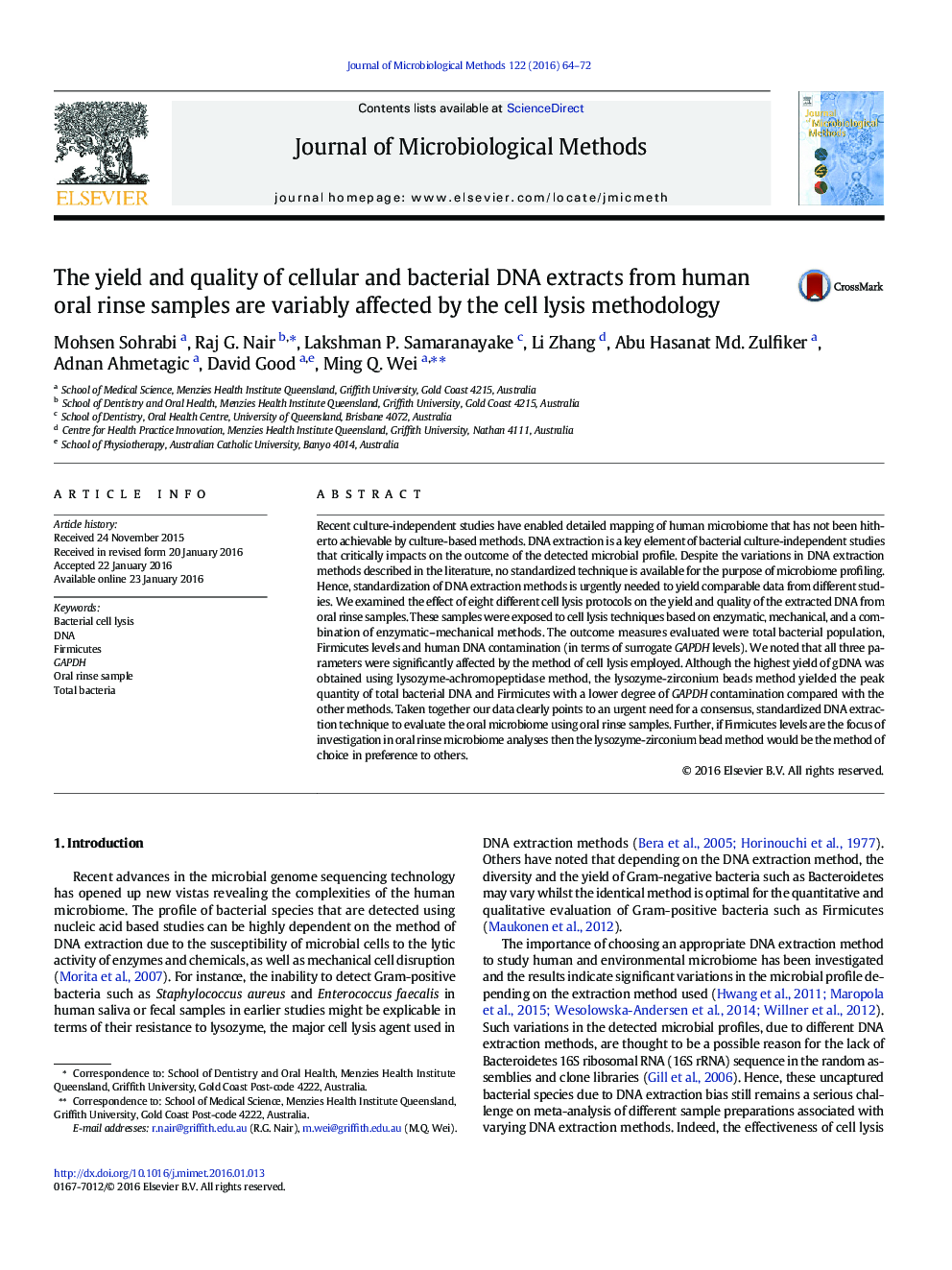| Article ID | Journal | Published Year | Pages | File Type |
|---|---|---|---|---|
| 2089723 | Journal of Microbiological Methods | 2016 | 9 Pages |
•Lysozyme–achromopeptidase cell lysis yielded the highest gDNA level.•Lysozyme–zirconium beads cell lysis extracted the highest level of bacterial DNA.•Lysozyme–zirconium beads cell lysis yielded the highest level of Firmicutes.
Recent culture-independent studies have enabled detailed mapping of human microbiome that has not been hitherto achievable by culture-based methods. DNA extraction is a key element of bacterial culture-independent studies that critically impacts on the outcome of the detected microbial profile. Despite the variations in DNA extraction methods described in the literature, no standardized technique is available for the purpose of microbiome profiling. Hence, standardization of DNA extraction methods is urgently needed to yield comparable data from different studies. We examined the effect of eight different cell lysis protocols on the yield and quality of the extracted DNA from oral rinse samples. These samples were exposed to cell lysis techniques based on enzymatic, mechanical, and a combination of enzymatic–mechanical methods. The outcome measures evaluated were total bacterial population, Firmicutes levels and human DNA contamination (in terms of surrogate GAPDH levels). We noted that all three parameters were significantly affected by the method of cell lysis employed. Although the highest yield of gDNA was obtained using lysozyme-achromopeptidase method, the lysozyme-zirconium beads method yielded the peak quantity of total bacterial DNA and Firmicutes with a lower degree of GAPDH contamination compared with the other methods. Taken together our data clearly points to an urgent need for a consensus, standardized DNA extraction technique to evaluate the oral microbiome using oral rinse samples. Further, if Firmicutes levels are the focus of investigation in oral rinse microbiome analyses then the lysozyme-zirconium bead method would be the method of choice in preference to others.
